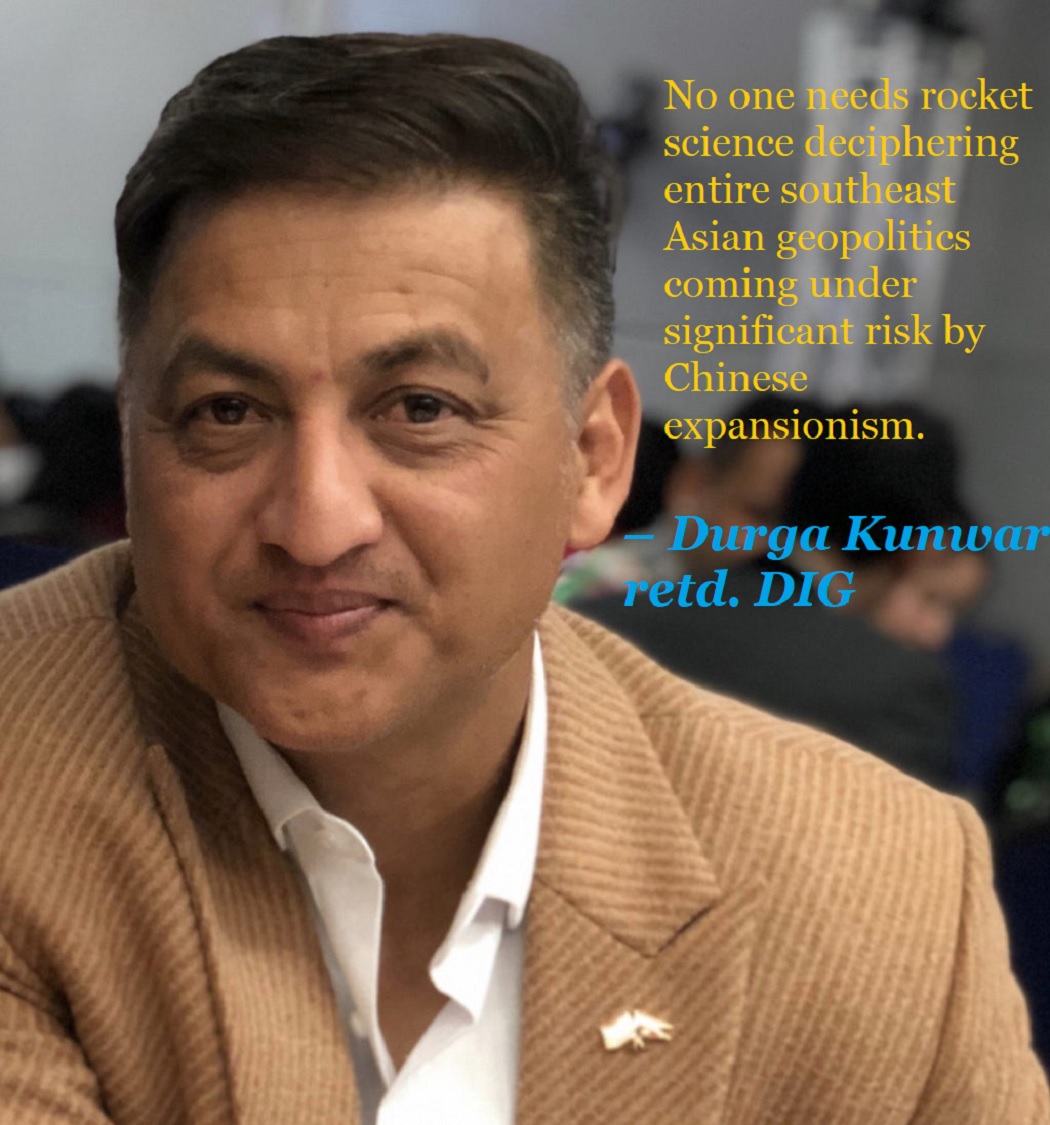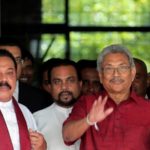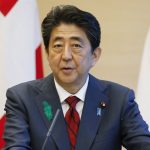Who Let the China Out- Is China’s peaceful rise possible?
Durga Kunwar
Exploiting unsettled border securing ground of tactical importance (GTI), China doubled down with absolute military adventurism into Doklam and Galwan capitalizing on largely unprepared Indian border defense forces.
Response drawn to decipher China’s jarring in jeopardizing hard-earned strategic balance with New Delhi under Modi remains debatable, particularly after exposure of Peoples Liberation Army’s (PLA) brutal modus operandi unleashed on June 15/16, 2020 at the Galwan Valley. Ethical and moral questions hovering over the barbaric use of force will haunt top Indian military hierarchy and scholar communities for many years- for soldiers have every reason to exercise their right to ask omissions, evasion, carelessness, and recklessness that endangered the very lives in a most brutish fashion particularly when Beijing’s response remains mystical.
What also remains uncontested is the threat of war looming over ever since as reiterated by Rajnath Singh, defense minister of India on his July 2020 visit to forward bases at Ladakh and subsequently moving Indian Navy air fleet to north, the first time in war mode. The recent Rafael fleet inducted in Ambala Cantt in optimum operational mode embosses gravity of conflict with irreversible relations developed between two giants.
Chinese invasive tactics to penetrate deep into a conflicting border that runs 2520 miles along the high mountain and deep gorges prized them considerable territories at the Depsang Y-junction, lake Pangong and Hot Springs-Gogra. Since 2016, more than 800 Chinese alleged intrusions into LAC are reported until it precipitated an unprecedented hand-to-hand scuffle at the Galwan Valley in June 2020, leaving millions in utter disbelief across the border and around the globe.
Stationed permanently on some of the disputed territories, People Liberation Army (PLA) stretches continuously against “global public opinion or parameters of reasonable conduct”, as Samir Saran, the President of Observer Research Foundation (ORF) observes. For China, the dispute was worth contesting as it is a strategic region not to forgo for the territories also secures their line of communication through G-219 national highway, the longest route coinciding with BRI commercial interest. It strategically connects disturbed Uighur minority regions of Xinjiang with Tibet autonomous region, both under Western Theatre Command, the biggest among 5 Chinese military formations commanded by the youngest general, Zhao Zongqi.
The medieval age barbaric dogfight at the altitude of 5500 meters and in the highest battlefield of the world, left a loss so dearly that both parties are finding it hard to eschew even today. The devastation also exposed the level of detestation and degree of animosity that runs deep into both military hierarchies. It was only after the marathon of high-level talks and rigorous diplomacy, tensions subsided, and fragile peace prevailed but for many, the situation remains akin to lull before the storm.
This is true as China will continue romancing with border, based on deception and lies, leaving no defenseless argument against political spinning and India will keep on building the pressure-political and strategic. Chinese military doctrine espousing tactical ruthlessness to fulfill political aim will remain paramount no matter where formations are stationed and India will maintain augmentation of forces along the disputed territories.
So far, the border disputes caught India off guard but for China, it had always been business as usual. With the major supply chain based in China and India being one of the biggest beneficiaries, China seems perfectly at ease with the coexistence of commerce and conflict, trade and war.
Is Dragon finally awake?
Considering the confrontational tendency Chinese forces inherently carry compromising neighbors’ sovereignty, the Galwan incident, therefore, is not a departure from its long-standing paradigm of military adventurism under the much-hyped policy of Chinese expansionism. But it was a massive blow to Modi’s “neighborhood first” policy, particularly to his overconfident dependency on Xi Jinping, just like Nehru’s laid overestimated faith on Mao Zedong and the first Chinese premier, Zhou Enlai in 1962, resulting in an all-out full-blown war.
Historically, political leaders are prone to mistakes and misjudging policies. This is where shrewd bureaucrats and seasoned strategists including military leadership come into play. Had general Sam Manekshaw, the Chief of Indian Army bowed to the political aim of Indira Gandhi’s to launch an attack on Pakistan military establishment in East Pakistan (now Bangladesh) in July 1971, India would have succumbed, probably bringing another crushing defeat after 1962. It was only general’s blunt denial and daring ability to say ‘no’ that prevented near defeat. Nevertheless, thumping victory was ensured when India finally entered into the conflict on December 3, 1972, at the advice of gen Manekshaw which lasted less than two weeks, one of the shortest in the modern military history but with the highest number of prisoners of war (POW) ever taken in conventional warfare.
However, with China’s issue, the context may differ but the essence remains the same. The border altercation at Galwan was not necessarily to draw Indian forces into all-out war but was to teach India a befitting “lesson” for traversing too far under U.S. Indo-Pacific Command and undermining status quo maintained in Siachen region. India deepening its strategic ties under Indo U.S. Pacific Command and shunning off its long posture of non-aligned stature with continuous and massive infrastructural built-up along the Aksai Chin area was long upsetting China. It was only double jeopardy for Beijing to decide whether to open another theatre at distant northwest when its formations were severely engaged in the South China Sea in the far east that delayed Chinese pernicious altercation.
It would be therefore another strategic blunder, for India to descent and scale down after winning de-escalation and breaking down Chinese camps in Galwan Valley as China will continue to flex its muscle for its too expensive for them to abandon finger 8 areas. China has not disengaged, it’s only the situation de-escalated. China will continue to stretch India, dragging beyond Indian sub-continent from Malacca to Harmuz to dominate a vast portion of the Indian Ocean and to deplete Indian strength in the high Himalayas, the prime theater of possible conflict. China is well aware of inherent constraints in policing the Arabian sea from Gwadar, Pakistan; the Gulf of Aden from Djibouti; the Bay of Bengal from Cocoa island, Myanmar unless all resources are expanded in these theaters proportional to the strategic response expected from its adversaries including India.
China will extend and expand these “string of pearls” through its permanent military bases for 80% of its exports and foreign trade passes through Strait of Malacca and the Indian Ocean. The Chinese long-term goal is to fan out Indian economic resources and deplete defense capabilities by opening multiple theaters of engagements maintaining pseudo proportional territorial threats and thereby displacing Indian prominence in the Indian Ocean and peripheries. Establishing “Listening Posts” stationed at dominating the high Himalayas and under deep seas, PLA will continue to trample far down into LAC with clandestine movements in the Indian Ocean- by raising strong rear areas to secure strong footholds- continental and maritime.
China is not “silent” anymore. The recent expulsion of India from Chabahar port, Iran is an ajar exposing dragon’s awakening. With a recent claim over some Bhutanese territories, China’s has added another front to engage India. Pursuing the long-term strategic policy, China will also continue to displace rivals and displease the United States by consolidating its position in the Indian Ocean, Arabian Sea, and the South China Sea. Propelling on distinct military power and with full potential political back-up, China may remain provocative and dangerously positioned. With recent border clashes and crackdown of Hong Kong’s pro-democracy movement, China’s expansionist policies are no more hidden and harmonious to its political claims including settling domestic issues as well.
“Let China sleep, for when she wakes, it will shake the world” quipped greatest military leaders, Napoleon Bonaparte two centuries ago, seems coming into play.
After the cold war, particularly upon the disintegration of the Soviet Union in the early eighties, unipolar world order opened a vast domain-commercially and strategically– for ambitious China to enter, exploit, and rule. Since then, there is no stoppage or looking back for the Communist Party of China and PLA. Once laden with extreme poverty and impoverishment with negative growth of -27% in 1961, today Beijing may potentially rumble economy of any targeted nation- its only degree and intention that matters.
However, the only leverage adversaries- military and strategic nations- has is China’s reluctance not to trade off comprehensive business opportunities with military adventurism. As long as China sees no collusion of war and trade, money and muscles under the expansionist policy, the belligerent behavior of Beijing will continue. This strategy of China, however, is yet to be tested in the South China Sea. China will juggle with her territorial vouch and may stage ‘eyeball to eyeball” contact with the United States until trade-war collision is imminent. The feign pride China takes with the USA historically dates back to an episode crafted in the Korean peninsula during the 1950s when China dared to confront mighty Americans, straining civil-military relations in the mainland USA, resulting in President Henry Truman relieving general Mac Arthur of his command from the U.S. forces in Korea.
Threat perception
Ironically, the problem of China is not its inherent infatuation with grabbing territories by force but Beijing’s deliberate ignorance of respecting international laws by circumventing the facts emanating from the twist of threat perceptions and security dilemmas. No one needs rocket science deciphering entire southeast Asian geopolitics coming under significant risk by Chinese expansionism. Sovereign nations forging to absorb perceived threats for survivability may not be a strategic exaggeration should they ramp up their defense with joint security measures. As militarization of the South China Sea continues, provocation and intimidation of such moves are expected to be countered by consolidating land, sea and air build-up, recalibrating military deployments, and syncing line of communications, synergizing joint military exercises with alliances and strategic partners. But such preparations stemming from Chinese provocative behavior is perceived as an unwarranted, unilateral move by Beijing.
PLA is a tool of Chinese expansionism for its soldiers are the cadre of CPC. Since the Tiananmen Square massacre, China places high leverage on its military to enforce domestic laws. Uighur handling and recent pro-democracy movement crackdown in Hong Kong is just an extension of such a controversial policy. For China, International conventions and laws don’t matter. China wants to bend, break, and replace the current international order emanating from such a paradigm. China prefers the law of rules and not rule of law. Xi’s declaration of China being ready for “bloody battle against their enemies” declared in 2018 is a clear manifestation of China’s intentions to rise as a hegemony. The preparation for comprehensive military built- up and recent massive military exercise presumably held in Tibet autonomous region substantiates such move.
Dominating Dragon: transferring money into missiles
Today China sits comfortably- both on strategic theater and economic environment. With a flurry of arsenals under its belt- short, medium, long-range warheads, nuclear weapons aided by thumping air capabilities and cruising navy combined with the largest active-duty military force in the world, 2.1 million, China is dangerously positioned to alter the global geostrategic balance. Subjugating the consumer world with ‘Made in China’ products and placing tech-savvy consumers under its digital trap, China has captured commerce and trade beyond borders and planted intelligence behind enemy lines. This was all done under “military-civil fusion”. Even with 10% GDP coming from agrarian production, the highest among the developed nation, China has shifted its economy from production of lower-end goods to higher-value products like aerospace and semi-conductors.
Spending close to 6 trillion US dollars on the ‘Belt and Road Initiative’, involving infrastructure investments in nearly 70 countries in Asia, Europe, and Africa, China is all set to destabilize the world order. China has opened two fronts- commercial and combat- overlapping one another to dominate aggregate consumer behavior by expanding Chinese markets and debt traps with a longstanding military strategy of gobbling territories bite by bite, piece by piece. With two distinct actors coming into interplay aided by technological supremacy, the time has come to rein China.
The exploitation of WTO has benefited China immensely and since 1980’s the military power has also seen an astronomical rise- both in strength and modernization. The Chinese military spending and defense budget has evidenced steady growth to outclass the rest of the world’s military might. Indian entire military spending is not even close to a quarter of China’s massive spending on defense. Today, the Chinese defense budget is way more than the United Kingdom, France, South Korea, and Russia combined. This significant public spending particularly when three of these nations are nuclear-capable and powerful military nations speak in length about Chinese transformation and political aim. Apart from the astronomical defense budget, China has announced an additional military budget of billions of dollars to achieve a clear strategic edge over adversaries by 2021.
India is not even under the Chinese threat perception radar. Engaging India into its political boundaries and stretching its defense forces along the border and vast Indian Ocean sea is what China thinks determinant to contain India. Looking southeast is a priority for China and as force build-up and escalation over the South China Sea grows, the U.S., west, and India will have no other option other than to consolidate and confront Xi Jinping’s expansionist policy of “national rejuvenation’”.
Based on radical revisionist and expansionist foreign policy, the fear of China’s ascendancy is visible in Taiwan, seen in Hong Kong, and continuously watched in the South China Sea. Not even a peaceful nation Bhutan is spared. China shares its external borders with 14 sovereign nations and none of the borders are tranquil including Japan in the East China Sea.
China wants to be a regional power with a long-term strategy to be the generation next superpower. Given COVID-19 menace, China may continue to battle in maintaining its economic growth and the expansion of its military prowess, however, it will maintain territorial quest- continental and maritime- and therefore cannot be taken off the radar. China will continue to evolve its posture from “assertive” to “aggressive” but will not abandon its “commercial-combat” synergy. As China’s wishes to dominate high seas of Indian Ocean, the Arabian Sea and part of Pacific along with strong footholds on the high Himalayas and the Karakorum combined with its dominance over the world economy by diversifying investment through BRI, soft loans dispersion and consumerism, the dragon’s adventurism will continue to aspire amidst global reprisal.
The ultimate aim of China is to enter in Southwest and East Asian region before it could entrap the current world order. The border dispute with India will remain viable despite projecting war readiness with an optimal exhibition of operational preparedness in rear areas. China, after recovering from the COVID-19 pandemic, will significantly engage its economic resources and military might, more robustly in the South China Sea and elsewhere, not to bounce back but to leap forward.
Therefore, the rise of China is unavoidable unless checkmate, and so it the question- will it be peaceful?
Durga Kunwar (retd. DIG), served in the Armed Police Force, Nepal, for 20 years. He was deputy metropolitan Commander in Kathmandu during 2015 mega earthquake. Post-retirement, he is security consultant in International Development Institute, Washington D.C, USA. Views are personal.
















